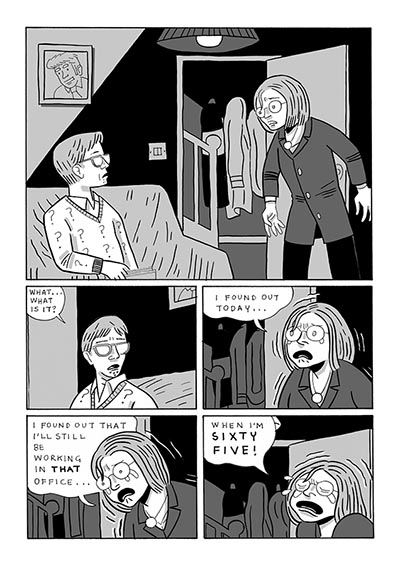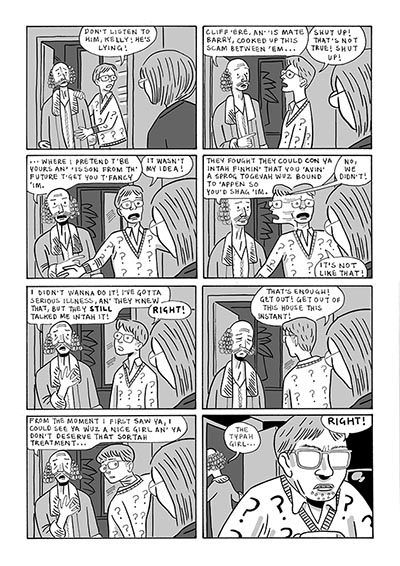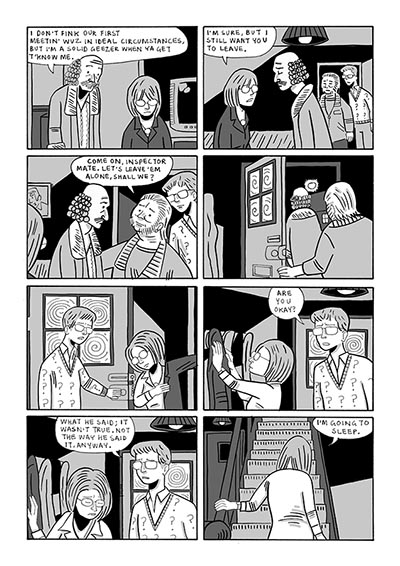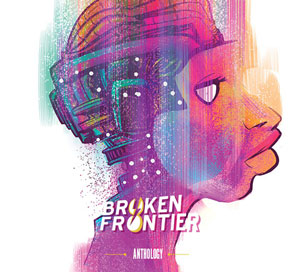“I like the idea of creating comics for people who might not otherwise read them. People who enjoy watching classic British TV soaps, for example.” That’s how Paul B. Rainey described the audience he had in mind for his work, while discussing Why Don’t You Love Me?, a couple of years ago. It wasn’t his first conversation with Broken Frontier, because Rainey has been a prolific writer and artist for a long time.
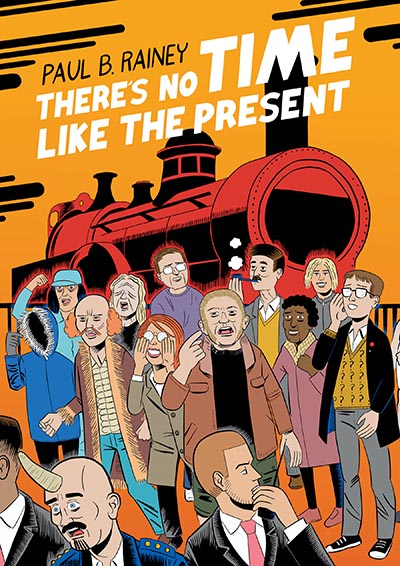
Originally a self-published small press series, There’s No Time Like the Present was first published in collected form by Escape a decade ago, but a new edition makes perfect sense given how well it has aged, and how it ties into contemporary fears about the pros and cons of technology. This is surprising because the premise itself, about time travelling, is exactly the kind that tends to sound dated rather quickly. What saves it is good old-fashioned storytelling, and Rainey’s ability to create characters that we may not identify with, but whom we learn to empathise with. It is an important detail, and one that separates his work from mundane science fiction narratives that have been cropping up in comics for decades.
The three characters here, all male and misanthropic, aren’t particularly mature. They’re also very British, eccentric in their own ways, and stuck in moments or habits from their past. They profess a desire to move on, but don’t manage it even when given the means, which is presumably one of the morals to be drawn here. If that sounds boring, it is anything but, because Rainey throws in everything from nerdy asides about cult television shows to subplots about unrequited love, to comments about how society treats anyone who refuses to conform.
Driving all the action within the narrative is something called the Ultranet, a kind of internet that allows users to pirate shows from the future or get a glimpse of how their lives will turn out if they are brave enough to look. Some of the characters travel back and forth across centuries, and Rainey delights in chronicling how that has a strange and wonderful impact on other lives. It also allows for some funny moments and snide remarks about collectors, nerds, and even the British at large.
Not everything about these intertwined tales works, because there’s a lot to take in and some twists that probably make more sense to Rainey than the reader. There are also a few unanswered questions, about minor figures who disappear without any resolution. That said, the pros outweigh the cons, and a second reading probably helps.
One of the nicest things about Rainey’s understated humour is how he treats big topics like grief and mortality. His characters get old and embrace the finality of their lives with something approaching grace, which gives the final chapters of the book a poignancy that elevates it. For those who read it the first time around, a new edition is a great reason to revisit it. For everyone else, this is another reminder that Rainey deserves all the attention that has come his way over the past few years.
Paul B. Rainey (W/A) • Drawn & Quarterly, $24.95
Buy online from Gosh! Comics here
Review by Lindsay Pereira





